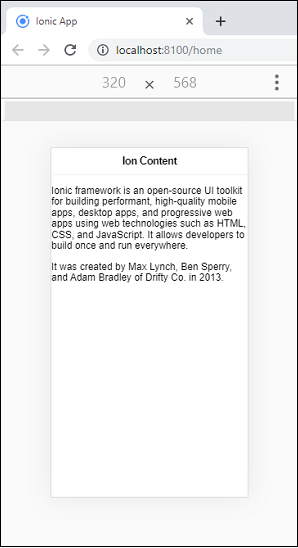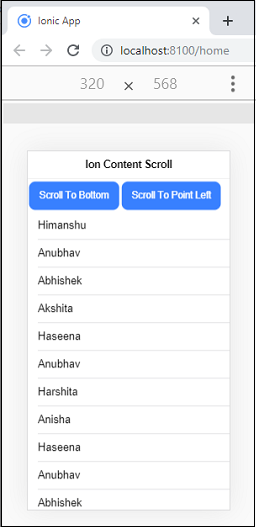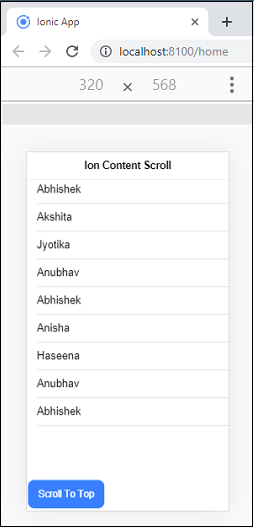Ionic ContentThe Ionic framework provides an <ion-content> element that serves as a container which wraps all the other elements that we want to create in the app. The content component allows an easy to use content area that contains some useful methods to control the scrollable area. In the Ionic app, there should be only one content component in a single view. Contents which contains many other Ionic components can be customized to modify its padding, margin, etc. by using the global styles provided in the CSS utilities. You can also customize it by individual styling using CSS and the available CSS custom properties. ExampleOutput 
Example of Ion-content ScrollingIf you want to use ion-content scroll event, you need to enable scroll events by setting the [scrollEvents] = "true." There are mainly three scroll events available for ion-content, which are as follows:
We can understand the ion-content scrolling from the following example. Home.page.html Home.page.ts Output When you execute the above Ionic app, it will give the following screen in your browser. 
Now, if you click the "Scroll to Bottom" button, you will go immediately at the bottom of the screen, which you can see in the below screen. Next, when you click the "Scroll to Top" button, you will again reach on the top of the screen, which we can see in the below image. 
Next TopicIonic DateTime
|
 For Videos Join Our Youtube Channel: Join Now
For Videos Join Our Youtube Channel: Join Now
Feedback
- Send your Feedback to [email protected]
Help Others, Please Share










